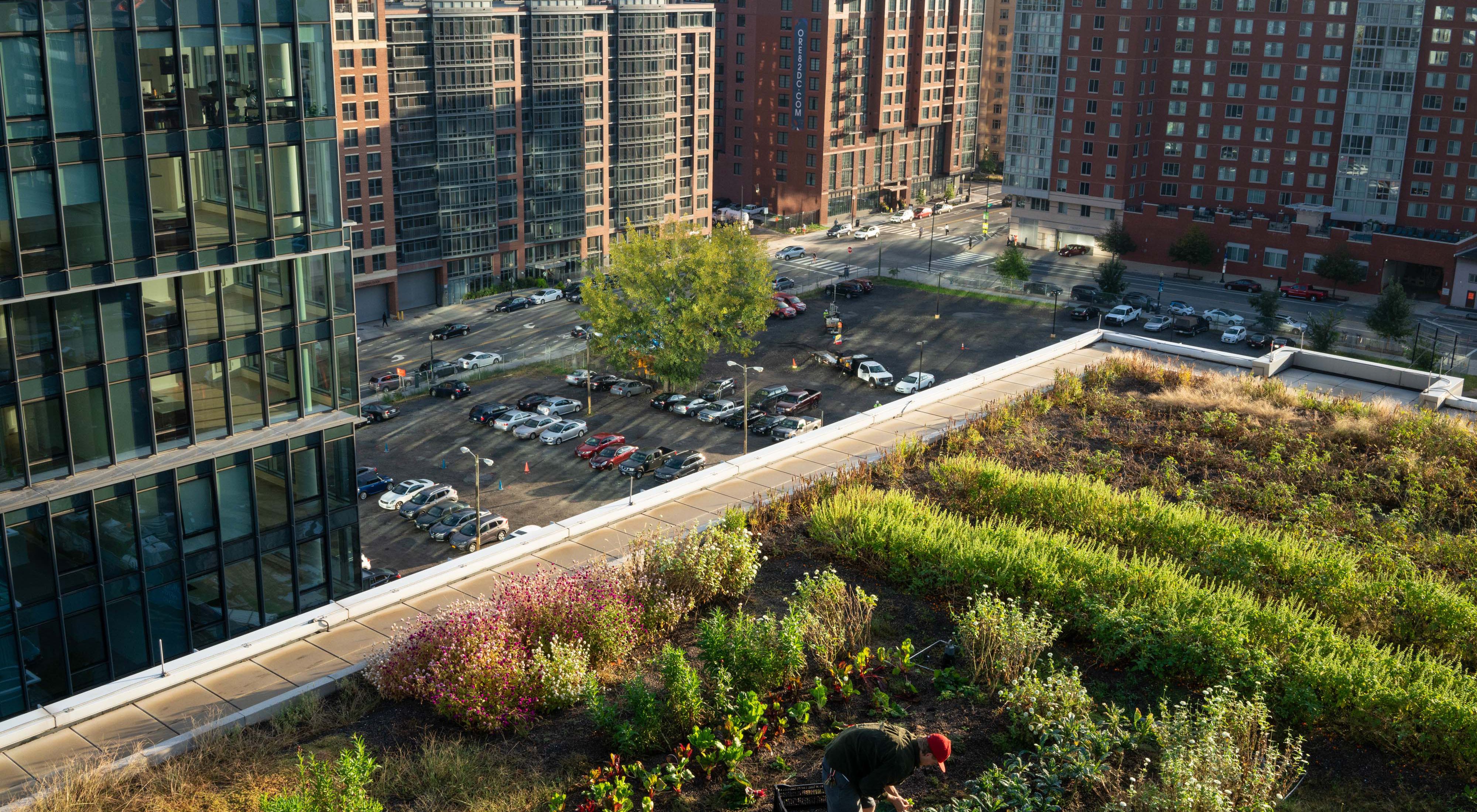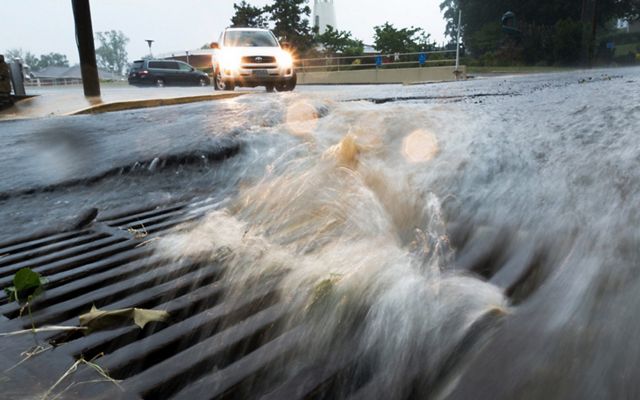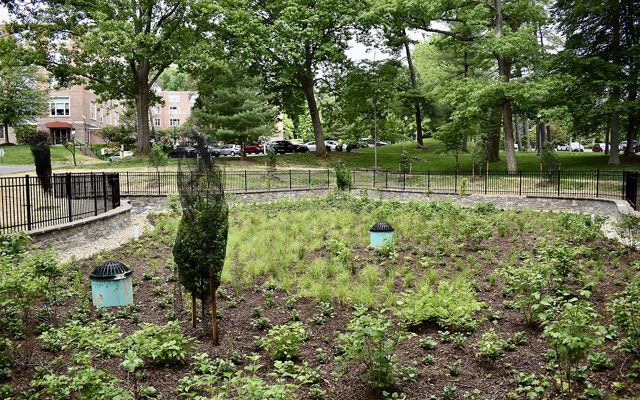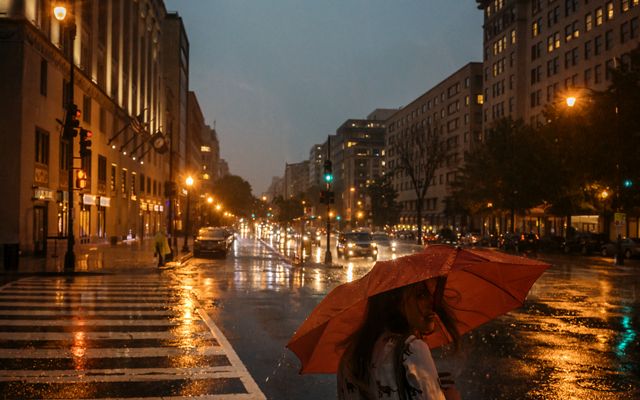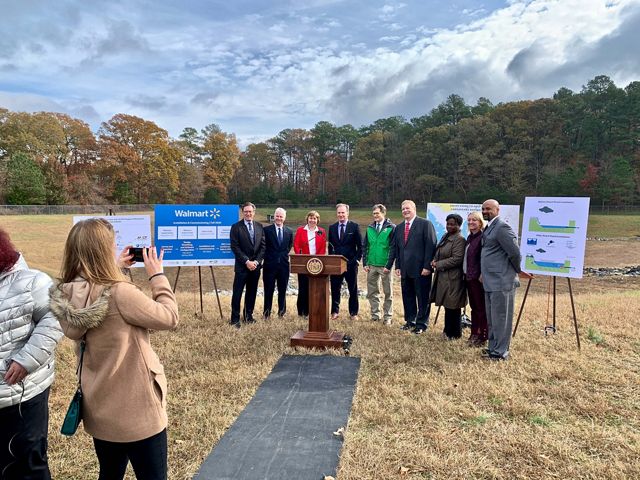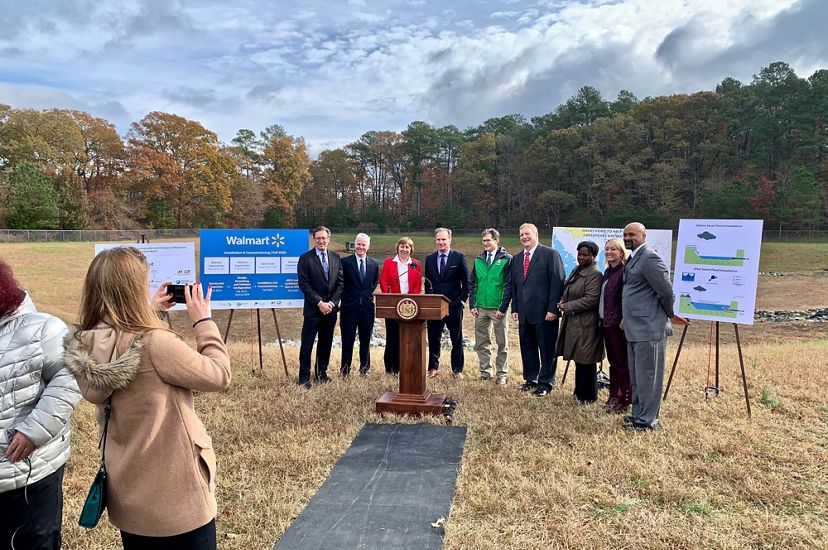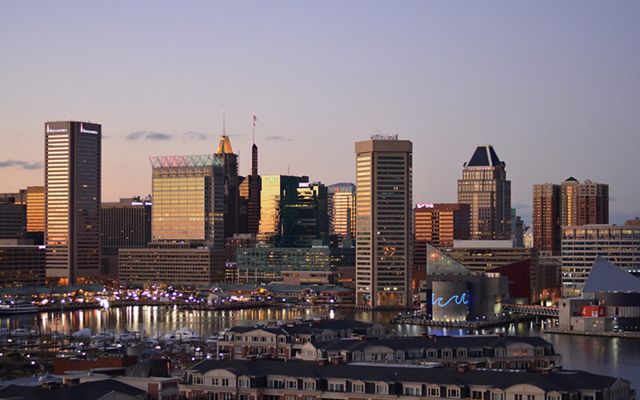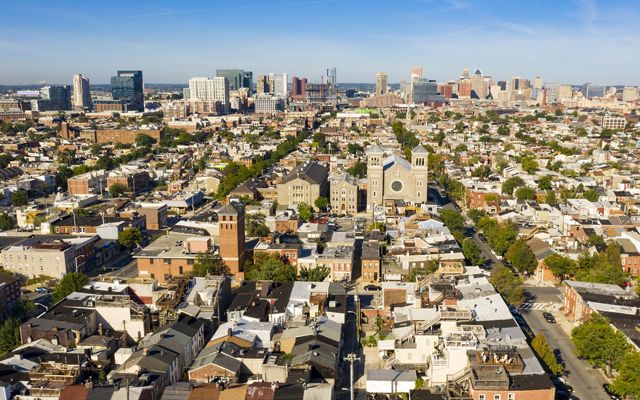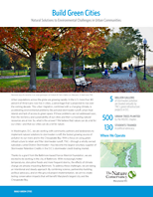Building Green Cities
Using the power of nature to make cities in the capital region more resilient and livable places.
As the capital region experiences record rain and heat, TNC is working with community partners and landowners to implement natural solutions to address the challenges of deadly heat waves, flooding and stormwater runoff, the fastest growing source of pollution to our rivers and to the Chesapeake Bay.
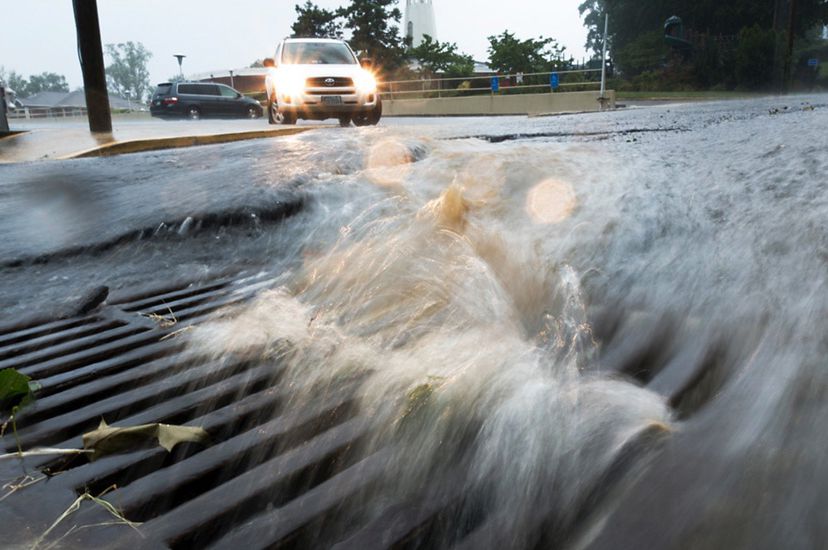
Growing Problem, Natural Solutions
Stormwater pollution is caused when rainwater falls on impervious surfaces—including sidewalks, parking lots and roads—where it mixes with oil, sediment, trash and other pollutants. It then flows into our cities’ sewer systems and rivers.
Replacing, buffering or retrofitting impervious surfaces with water retaining green infrastructure like rain gardens allows polluted stormwater to be captured and cleaned. Water is absorbed and filtered by the plants, topsoil, sand and gravel layered within a rain garden.
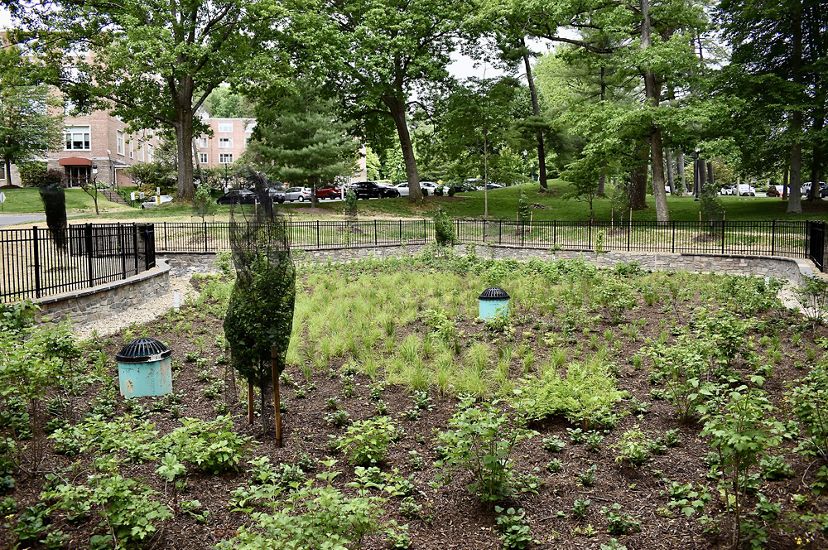
Stormwater Project Completed: Knollwood Lifeplan Community
A large, three-phase green stormwater infrastructure project at Mt. Olivet Cemetery was TNC's first successful foray into Washington, DC’s innovative stormwater retention credit market, implemented through its subsidiary, District Stormwater LLC. In summer 2021, we celebrated the completion of another stormwater project.
Through District Stormwater LLC, TNC and the Knollwood Life Plan Community collaborated on a green infrastructure site and rain garden. Located in northwest Washington, the Knollwood property sits directly next to Rock Creek Park, one of the city’s most beloved natural landmarks.
The garden collects stormwater runoff from the facility’s parking lots—an estimated 3 million gallons annually—to help slow and clean the runoff before it flows into Rock Creek and ultimately into the Potomac River and Chesapeake Bay. The project also generates SRCs to be sold on DC's Stormwater Retention Credit market.
The Knollwood community is home to some 300 residents, most of whom are retired military personnel and their families. Its proximity to Rock Creek Park with its miles of hiking trails is certainly one of the neighborhood’s biggest draws, and through this stormwater project, Knollwood is doing its part to help improve the health of Rock Creek.
Quote: Jeanne Braha
As climate change increases heavy precipitation events, we all must be more creative. Thank goodness for smart incentives to drive effective partnerships like this one.

Investing for Impact
With a focus on using green infrastructure to retain and filter stormwater runoff, TNC—through a wholly owned subsidiary called District Stormwater—has become the largest voluntary supplier of Stormwater Retention Credits (SRC) in the district's stormwater credit trading market, 80 percent of which were sold to developers.
In 2015, when TNC first decided to launch an urban stormwater program in DC, the long-term goal was to help establish the city's stormwater credit-trading market concept. Since then, we have worked hard to raise impact capital, hire dedicated staff, work patiently with landowners and help the city create policies and incentives.
Cities around the world are looking at DC as a model and many are now taking steps toward implementing similar market-based approaches to tackling their stormwater problems.
Old Problem, New Solution
One of the oldest methods for capturing runoff, the stormwater pond, is getting a digital makeover. No longer simply collecting rainfall washing off pavement and lawns, smart ponds anticipate precipitation before it begins and adjusts to reduce downstream pollution and flooding.
In a program that could serve as a national model of environmental stewardship, TNC is partnering with the Maryland Department of Transportation (MDOT), the Maryland Department of the Environment (MDE) and technology firm Opti to implement advanced stormwater control technology at existing sites to help curb local flooding and reduce stormwater runoff to the bay.
Smart pond technology uses sensors and software to monitor real-time conditions such as water level and storage volume. The system uses internet-based forecasts to remotely operate valves that control timing and volume of water discharge. Longer retention time increases water quality by capturing more sediment and nutrients. When rain is forecast, the system can automatically open valves to drain the pond prior to precipitation. This helps maximize storage efficiency and can reduce downstream flooding.
Working together to harness technologies that deliver low-cost solutions to water pollution, our hope is that this innovative approach can be replicated across the bay watershed and beyond.
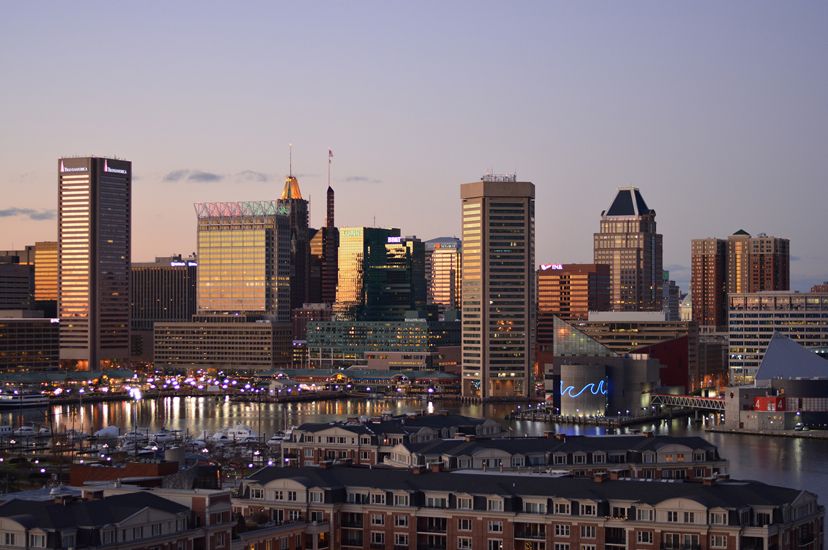
Charm City: Baltimore Expansion
Thanks to a grant from the France-Merrick Foundation, in 2020 TNC expanded our Build Green Cities program to Baltimore with the goal of weaving our mission into the fabric of this vibrant community.
Baltimore is one of the most densely populated coastal cities in America. Residents’ lives are heavily impacted by heat waves and flooding, both of which are exacerbated by climate change. TNC's conservation focus is centered on on-the-ground community-driven conservation projects with an emphasis on stormwater retention and coastal resilience, strategic tree canopy expansion and environmental justice initiatives emphasizing youth engagement.
Baltimore Program Director Isaac Hametz provides strategic leadership, directing our conservation portfolio in Baltimore. Isaac has deep ties to the city, coming from a landscape architecture, urban design and planning firm based in Baltimore where he built the firm’s design research and coastal resiliency portfolios emphasizing ecological integrity, economic uplift and community identity.
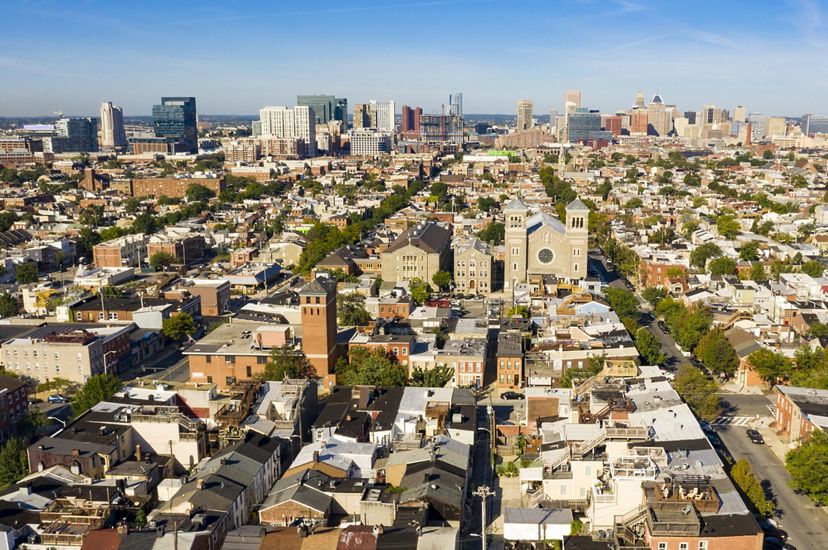
As we build relationships in Baltimore, it’s important that we understand the injustices that exist today and the history of systemic racism, segregation and discriminatory housing and urban planning practices that led to them. The lasting impacts of these legacy racist policies—including redlining—have created neighborhoods that lack access to green spaces and trees.
Communities and organizations in Baltimore are facing these challenges head on, demonstrating that the city’s past doesn’t have to dictate its future. With innovative city programming, community organizing and public–private partnerships, Baltimore is in the midst of the type of transformative change needed in cities across the country.
As we deploy on-the-ground projects in Baltimore, we are committed to applying an equity and justice lens to everything we do. As an organization that works both globally and locally, we bring solutions and lessons that have been tested in other cities. We also bring pre-existing relationships with government agencies and state officials that can accelerate the pace and scale of conservation in Baltimore. We envision a future where Charm City is America’s most resilient city.
Contact
Aileen Craig, PE
Stormwater Project Manager
email: aileen.craig@tnc.org
Isaac Hametz
Baltimore Program Director
email: isaac.hametz@tnc.org
We Can’t Save Nature Without You
Sign up to receive monthly conservation news and updates from Maryland/DC. Get a preview of Maryland/DC's Nature News email.

